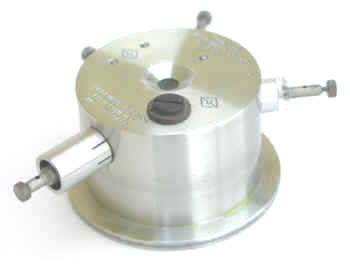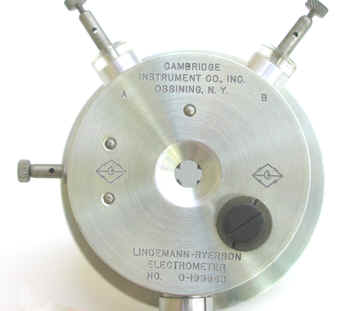Lindemann-Ryerson Electrometer (ca. 1950)
This instrument seems to have been developed during World War II as a substitute for the standard Lindemann electrometer. Manufactured by the Cambridge Instrument Company of New York City, it is 3.5 cm high with a 6 cm diameter—small enough to be conveniently mounted on a microscope stage.
It is capable of measuring currents as low as 10-10 to 10-14 amperes.
While the fiber was normally viewed through a microscope, the manufacturer also produced a device that could project an image of the fiber onto a screen for easier viewing.


In the photo to the right, the fiber cannot be seen. The corners of the four quadrants are visible in the window however.
This particular example was used at the National Bureau of Standards.
Reference
Atomic Energy Commission Radiation Instrument Catalog, Page AE-4B, July 1, 1950.
